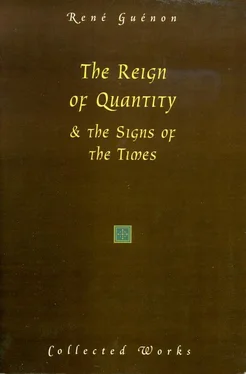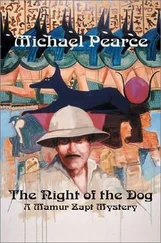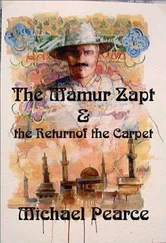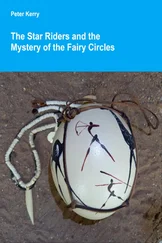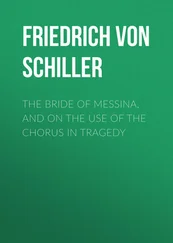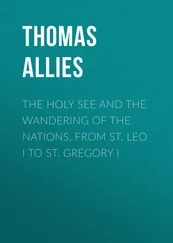In plane geometry a similar relation is obviously found when the sides of the square are considered as being parallel to two rectangular diameters of the circle, and the symbolism of this relation is directly connected with what the Hermetic tradition calls the ‘quadrature of the circle’, about which a few words will be said later on.
In certain symbolical representations the compass and the square respectively are placed in the hands of Fu Hsi and his sister Niu-koua, just as, in the alchemical figures of Basil Valentine, they are placed in the hands of the two halves, masculine and feminine, of the Rebis or Hermetic Androgyne; this shows that Fu Hsi and Niu-koua are in a sense analogically assimilated, as regards their respective functions, to the essential or masculine principle and to the substantial or feminine principle of manifestation.
Thus, for example, the ritual garments of the ancient sovereigns in China had to be round in shape at the top and square at the bottom; the sovereign then represented the type of man himself ( Jen ) in his cosmic function, as the third term of the ‘Great Triad’, exercising that function as intermediary between Heaven and Earth, and uniting in himself the powers of both.
See The King of the World , also The Symbolism of the Cross , chap. 9.
If this is compared with the correspondences previously pointed out, it might appear that there had been an inversion in the use of the two words ‘Heavenly’ and ‘Terrestrial’ and there is in fact a discrepancy, except in the following particular connection: at the beginning of the cycle, this world was not such as it is now, and the ‘Terrestrial Paradise’ constituted the direct projection, at that time visibly manifested, of the specifically celestial and principial form (it was besides situated in a sense at the confines of heaven and earth, since it is said that it touched the ‘sphere of the Moon’, that is, the ‘first heaven’); at the end of the cycle, the ‘Heavenly Jerusalem’ descends from heaven to earth, and it is only at the end of that descent that it appears in the form of a square, because then the cyclic movement has come to a stop.
It is worth noting that this circle is divided up by the cross formed by the four rivers which rise at its center, thus giving exactly the figure alluded to when the relation of the circle and the square was being dealt with.
See The Esoterism of Dante .
This moment is also represented as that of the ‘reversal of the poles’ or as the day when ‘the stars will rise in the West and set in the East’, for a rotational movement appears to take place in two opposite directions according as it is looked at from one side or the other, though it is really always the same continuous movement, but seen from another point of view, corresponding to the course of a new cycle.
See The King of the World . The twelve signs of the zodiac, instead of being arranged in a circle, become the twelve gates of the ‘Heavenly Jerusalem’, three being placed on each side of the square, and the ‘twelve suns’ appear in the center of the ‘city’ as the twelve fruits of the ‘Tree of Life’.
That is, a square of the same surface area, if a quantitative point of view is adopted; but this is merely a wholly exteriorized expression of what is really in question.
The corresponding numerical formula is that of the Pythagorean Tetraktys : 1 + 2 + 3 + 4 = 10; if the numbers are taken in the reverse order: 4 + 3 + 2 + 1, this gives the proportions of the four Yugas , the sum of which is the denary, that is to say the complete and finished cycle.
Much could be said about the prohibitions formulated in certain traditions against the taking of censuses otherwise than in exceptional cases, if it were to be stated that such operations, like all those of the ‘civil state’ as it is called, have among other inconveniences that of contributing to the cutting down of the length of human life (and this is anyhow in conformity with the progress of the cycle, especially in its later periods), but the statement would simply not be believed; nevertheless, in some countries the most ignorant peasants know very well, as a fact of ordinary experience, that if animals are counted too often far more of them die than if they are not counted; but in the eyes of moderns who call themselves ‘enlightened’ such things cannot be anything but ‘superstitions’.
Two particularly significant examples may be cited here: the ‘Zionist’ projects as they affect the Jews, and the attempts recently made to fix the Bohemians in certain countries of Eastern Europe.
It must be recalled in this connection that the ‘Heavenly Jerusalem’ itself is symbolically a town, which shows that in this case also there is reason to take account of a double meaning in ‘solidification’.
It may be added that, as Cain is said to be the elder, agriculture therefore appears to have some kind of anteriority, indeed Adam himself is represented as having had the function of ‘cultivating the garden’ in the period before the fall. This is also related more particularly to the vegetable symbolism in the representation of the beginning of the cycle (hence there was a symbolical and even an initiatic ‘agriculture’, the very same as that which Saturn was said by the Latins to have taught to the men of the ‘Golden Age’); but however that may be, all we have to consider here is the state of affairs symbolized by the opposition (which is at the same time a complementarism) between Cain and Abel, arising when the distinction between agricultural and pastoral peoples was already an established fact.
The names Iran and Turan have frequently been treated as if they were the names of races, but they really represented the sedentary and the nomadic peoples respectively; Iran or Airyana comes from the word arya (whence arya by extension), meaning ‘laborer’ (derived from the root ar , found again in the Latin arare , arator and also arvum , ‘field’); and the use of the word arya as a title of honor (for the superior castes) is consequently characteristic of the tradition of agricultural peoples.
On the very special importance of the sacrifice and of the rites connected with it in the different traditional forms, see Frithjof Schuon, ‘On Sacrifice’, in The Eye of the Heart (Bloomington, IN: World Wisdom Books, 1997), and A. K. Coomaraswamy, ‘ Ātmayajña : Self-Sacrifice’, in The Door in the Sky : Coomaraswamy on Myth and Meaning (Princeton: Princeton University Press, 1997), chap. 4.
The fixation of the Hebrew people was essentially dependent on the existence of the Temple in Jerusalem; as soon as the Temple was destroyed nomadism reappeared in the special form of the ‘dispersion’.
Fabre d’Olivet’s works may be consulted on this cosmological interpretation.
The use of the mineral elements includes more especially building and metallurgy; the latter will be further considered later; Biblical symbolism attributes its origin to Tubalcain, that is, to a direct descendant of Cain, and Cain’s very name reappears as a constituent in the formation of his descendant’s name, indicating that there is a very close connection between the two.
Читать дальше
